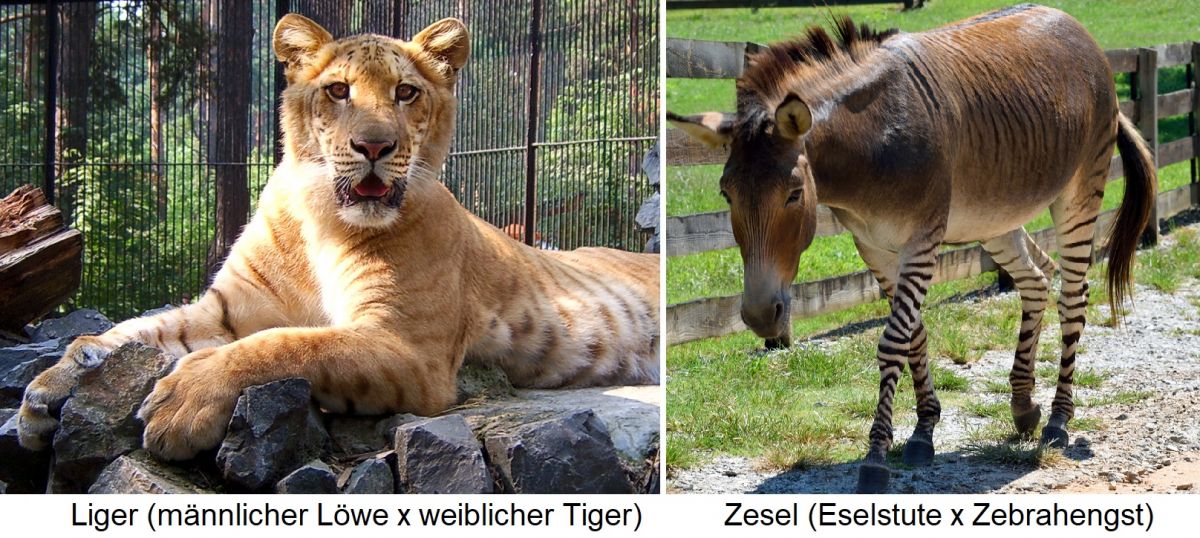Colloquial term for interspecific crosses of grape varieties carried out in the late 19th and early 20th century, especially in the USA; see under hybrids.
Hybrids
Means "from two different origins" or "created by mixing" or colloquially (sometimes pejoratively) also hybrid, bastard or blendling. In scientific parlance, this refers to a living organism (plant, animal) that has been created by crossing parents of different breeding lines (genus = genus or species = species). Crosses that occur spontaneously in nature without human intervention are known as natural hybrids, especially in the case of plants. In viticulture, hybrids are only understood to be the results of crosses between different species or genera.
Types of crosses
Strictly speaking, crosses of the same species are also hybrids (intraspecific = within the species). As a rule, however, only interspecific or intergeneric crosses are regarded as hybrids.
- intraspecific = same species of the same genus; e.g. Vitis vinifera x Vitis vinifera
- interspecific = different species of the same genus, e.g. Vitis vinifera x Vitis rupestris
- intergeneric = species of different genera w. e.g. Vitis vinifera x Muscadinia rotundifolia
This does not look nearly as spectacular in plants as it does in animals and is not immediately recognisable even by experts. The situation is quite different with hybrids in the animal world, the best-known examples being mules (donkey mare x horse stallion), mules (horse mare x donkey stallion) and ligers (male lion x female tiger).

American hybrids
Hybrids in the viticultural sense are crosses between two different species. First-time crosses are referred to as primary hybrids. As a rule, however, hybrids with American genes (e.g. Vitis cinerea, Vitis labrusca, Vitis riparia etc.) with the desired characteristics are crossed with a European cultivar (Vitis vinifera). The results are then secondary hybrids. Most of the varieties, some of which are resistant to phylloxera and fungi, were created towards the end of the 19th and beginning of the 20th century.
foxy
Many have the obtrusive foxy, which disqualifies them for wine production, at least in Europe. These varieties created in the USA are called American hybrids, although they also contain European genes. These are Agawam, Albania, Alden, America, Blanc Du Bois, Campbell Early, Cayuga White, Clinton, Concord, Elvira, Delaware, Dutchess, Herbemont, Hopkins, Horizon, Iona, Isabella, Jacquez, Melody, Missouri Riesling, Munson, Niagara White, Norton, Noah, Orlando Seedless, Othello, Rubired, Taylor, Traminette and Vênus.

French hybrids
The complex cross-breeding products of the late 19th and early 20th century are known as French hybrids, because in France in particular, attempts were made to alleviate the problem of phylloxera-related vine death by breeding phylloxera-resistant hybrid varieties for viticulture. Naturally, American species had to be used in the process. The US botanist Thomas Volney Munson (1843-1913) provided valuable help with rootstocks, as did grower Hermann Jaeger (1844-1895), who immigrated to Missouri from Switzerland, with American hybrids, which were then used to cross with European varieties.
Hybrid varieties x European vines
There are countless crosses of hybrids with Vitis vinifera or other hybrid varieties (secondary or multi-hybrids). Examples are Aurore, Baco Blanc, Baco Noir, Bellandais, Cascade, Chambourcin, Chancellor, Chardonel, Chelois, Colobel,...
Voices of our members

For me, Lexicon from wein.plus is the most comprehensive and best source of information about wine currently available.
Egon Mark
Diplom-Sommelier, Weinakademiker und Weinberater, Volders (Österreich)